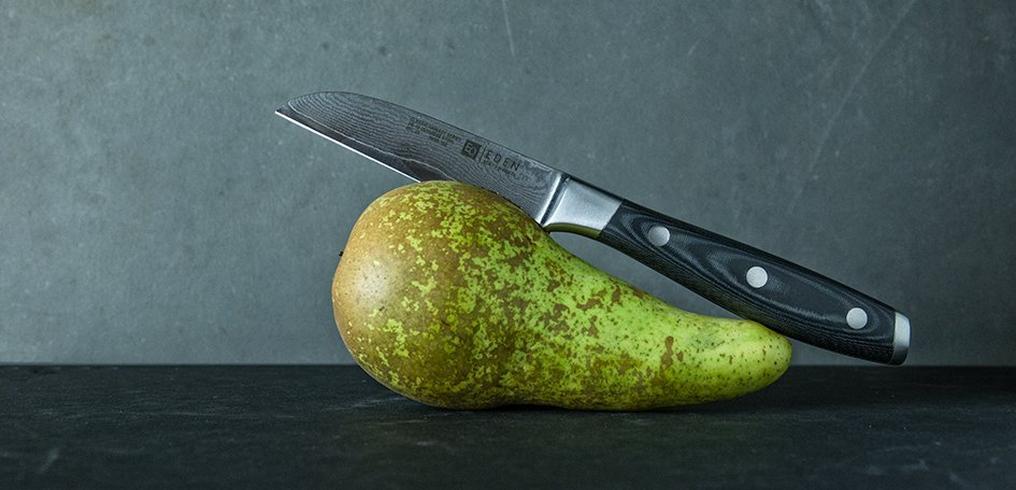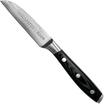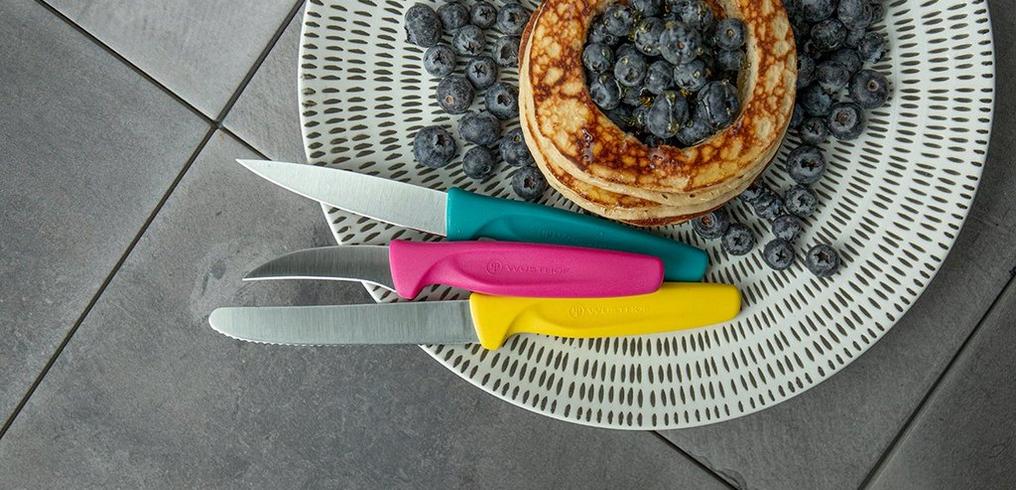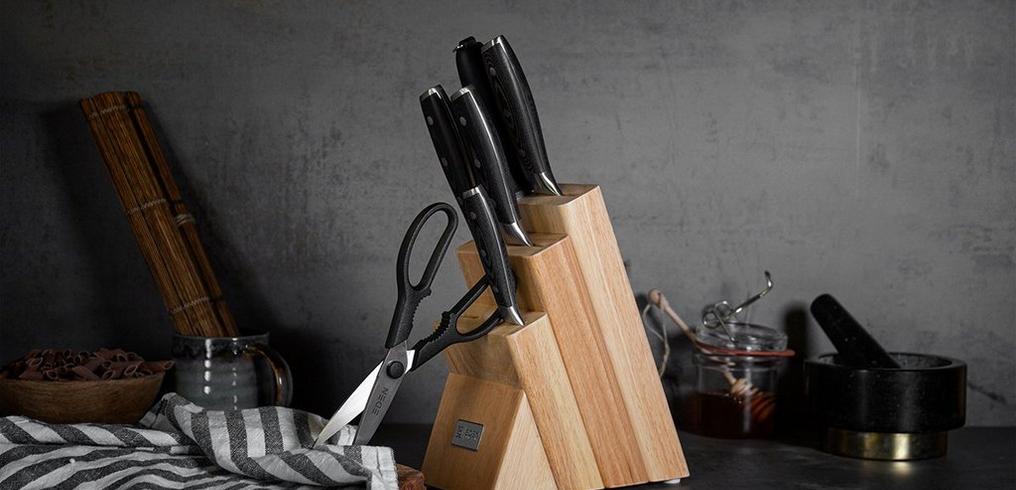
Peeling knives: a must-have for any kitchen
Every kitchen should have at least one peeling knife. You use a peeling knife to peel and cut all sorts of fruit and vegetables. Even the most delicate fruit is easy to peel with a sharp peeling knife!



















Features of peeling knives
A peeling knife is a small kitchen knife, usually with a blade length of approx. 7 to 11 cm. The blade has a straight edge and back of the blade slopes down towards the tip. This is similar to a 'sheepsfoot' blade shape, making these knives look like little santokus. There can be a bit of confusion surrounding the term peeling knife. It is often confused with a paring knife or a turning knife. However, these have different blade shapes. Thanks to its small size, a peeling knife is perfect for fine and precise cutting tasks, like peeling fruit and vegetables. A paring knife and turning knife can also be used to peel fruit and vegetables, but these were designed with other core tasks in mind.
How to choose the best peeling knife
The sharp blade of a peeling knife
The knives are sharp upon delivery, which is great for peeling fruit and vegetables with thin or delicate skins, such as potatoes, apples and kiwis. It is also super practical for removing seeds and cores from tomatoes or apples, for example. The slim, sharp blade allows you to remove thin layers of skin from fruit and vegetables without wasting too much fruit.
How to choose the best peeling knife
When choosing a peeling knife, it's important to consider which steel type you prefer: stainless steel or carbon steel. Stainless steel is easy to maintain. Carbon steel can often achieve a sharper edge than stainless steel because it is harder, however, this type of steel is not corrosion resistant. Each material has its advantages and disadvantages, choose the one that suits your needs.
In addition to different materials, there are also different blade shapes to choose from; straight, curved, pointy... Choose the shape that will be most useful for the ingredients you use most often.
Lastly, take a look at the handle of the knife. Will you choose a classic, but high-maintenance wooden handle, or rather a low-maintenance plastic handle? Choose a knife with a handle that feels nice and comfortable in your hand and offers a good grip. This allows you to use the knife safely and for long periods of time without fatigue.
How to maintain a peeling knife
To properly maintain your peeling knife, it is important to rinse it well after each use and clean it by hand using a mild soap. Besides cleaning, you should also sharpen your knife on a regular basis. How often you need to sharpen your knife depends on how often you use it.








